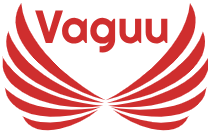Organizing insurance-related deeds efficiently is crucial for easy access, compliance, and risk management. Here’s a structured approach to organize insurance-related documents effectively:
Digital Storage System: Utilize a secure cloud-based storage system to store all insurance-related documents. This ensures accessibility from anywhere, enhances collaboration, and minimizes the risk of loss or damage.
Create Categories: Organize documents into categories based on the type of insurance, such as health, life, property, and liability insurance. Within each category, further classify documents by policy type, renewal dates, and coverage details.
Naming Conventions: Develop a standardized naming convention for files to facilitate easy search and retrieval. Include relevant details such as policy number, coverage period, and insured party’s name in the file name.
Folder Structure: Establish a logical folder structure to house different types of insurance documents. For example:
- Insurance Policies
- Health Insurance
- Life Insurance
- Property Insurance
- Liability Insurance
- Claims and Correspondence
- Renewal Notices
- Premium Payments
- Certificates of Insurance
Document Index: Maintain a comprehensive document index or inventory listing all insurance policies, including key details such as policy numbers, coverage limits, deductibles, and contact information for insurers.
Document Retention Policy: Implement a document retention policy outlining the duration for retaining various types of insurance documents based on legal requirements and business needs. Dispose of expired or obsolete documents securely to declutter the system.
Backup and Disaster Recovery: Regularly backup insurance documents to prevent data loss in case of system failures or cyberattacks. Implement robust disaster recovery measures to ensure business continuity in the event of unforeseen circumstances.
Access Controls: Restrict access to sensitive insurance documents to authorized personnel only. Implement role-based access controls to ensure that employees can only view or modify documents relevant to their responsibilities.
Compliance Tracking: Monitor compliance with insurance requirements and regulations by tracking policy renewal dates, premium payments, and coverage updates. Set up reminders for upcoming renewals and compliance deadlines to avoid lapses in coverage.
Regular Review and Audit: Conduct periodic reviews and audits of insurance documents to verify accuracy, identify gaps in coverage, and update policies as needed. Document any changes or updates made to ensure a transparent and auditable process.
By implementing these strategies, organizations can streamline insurance-related document management, enhance compliance, and mitigate risks associated with inadequate coverage or documentation.

